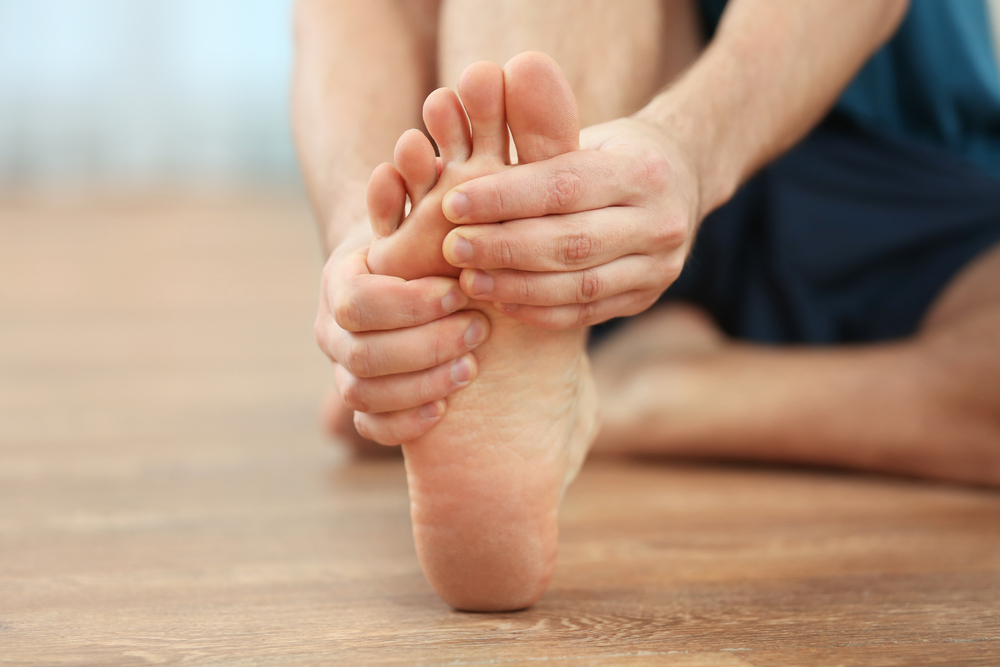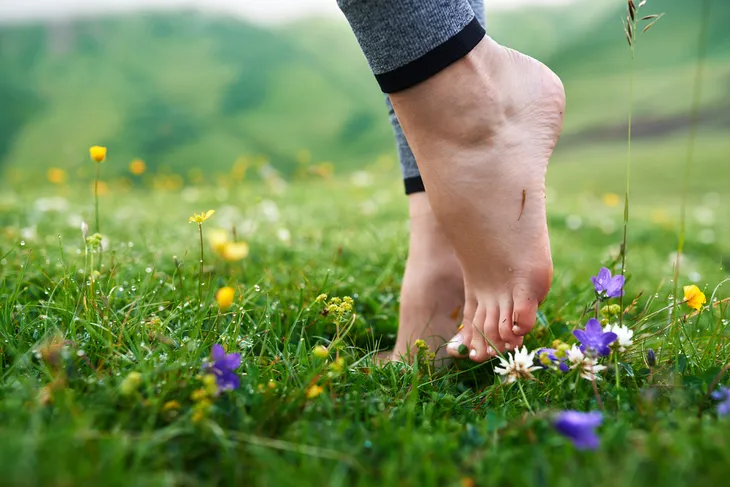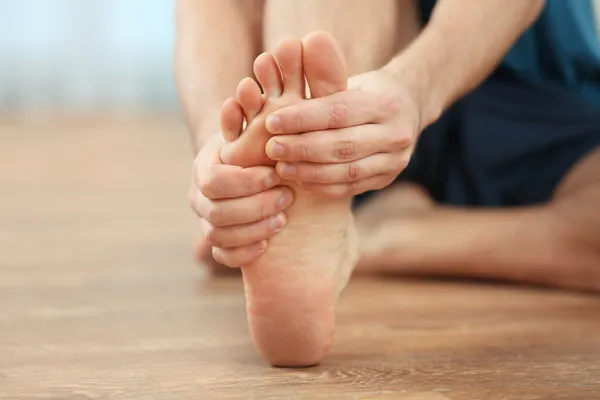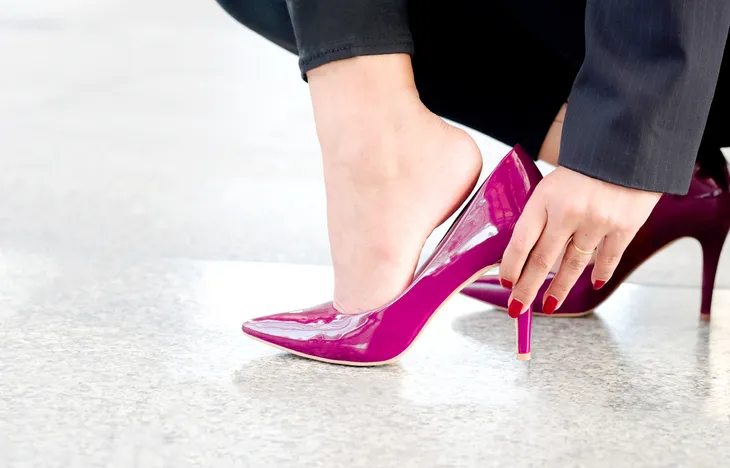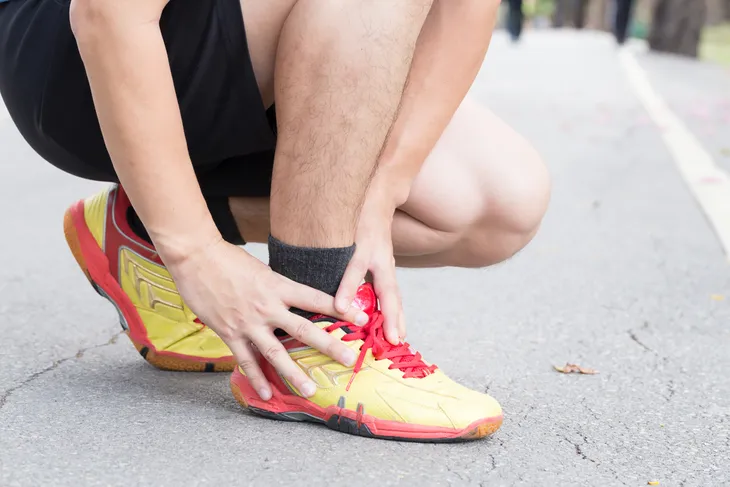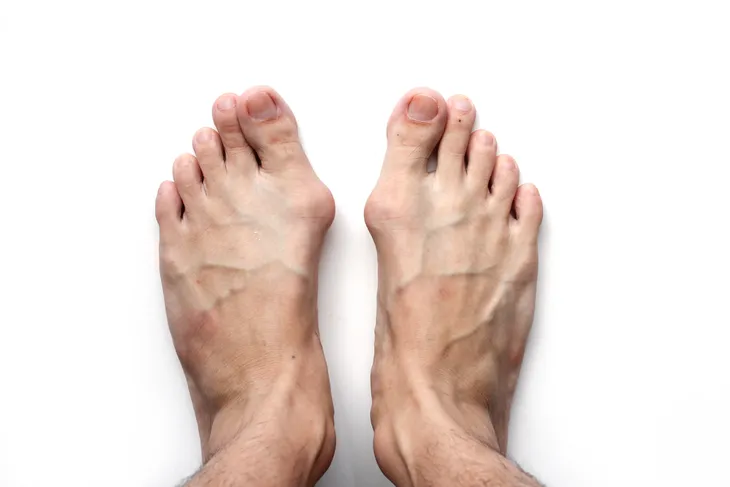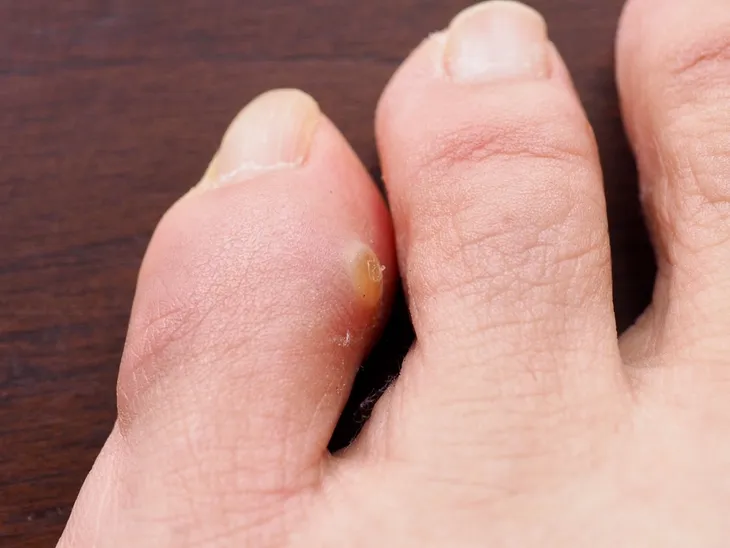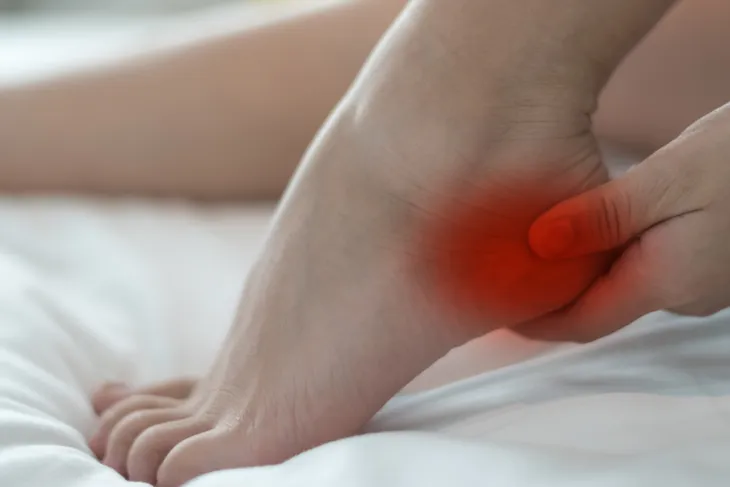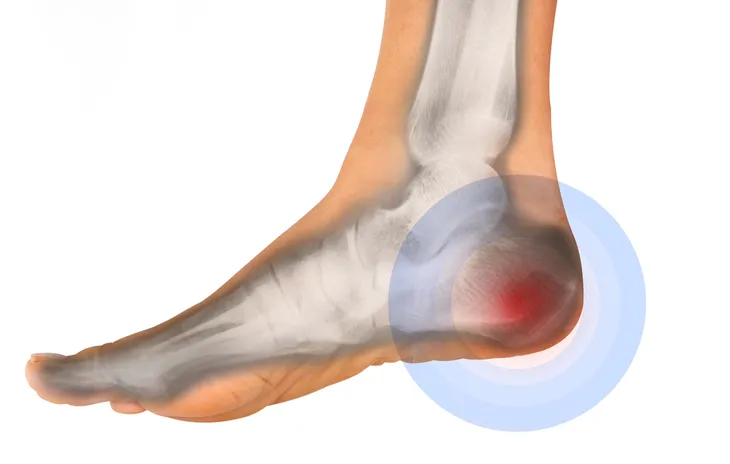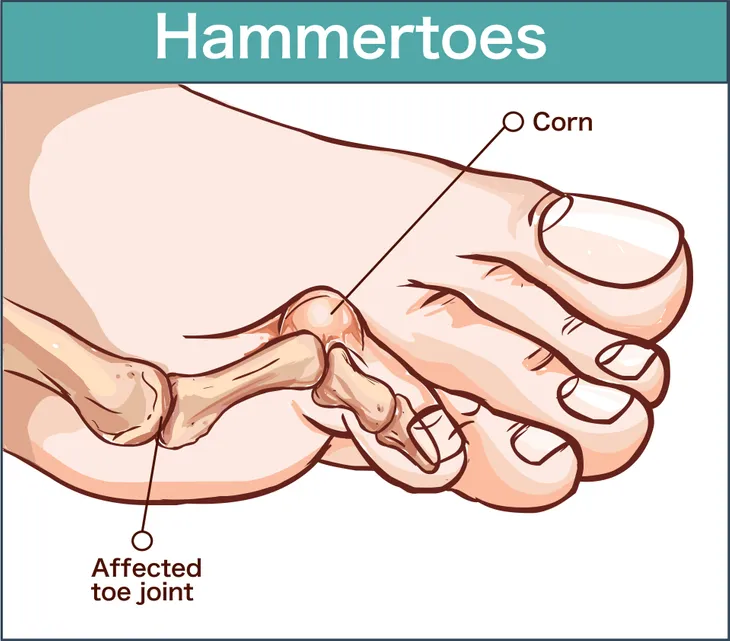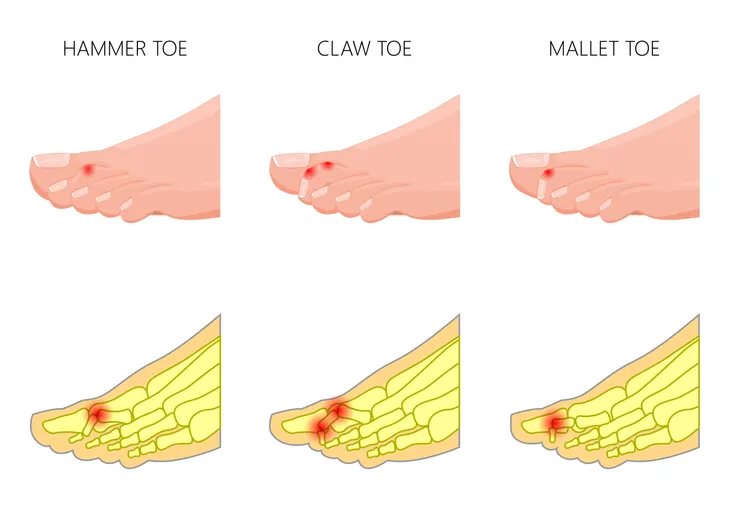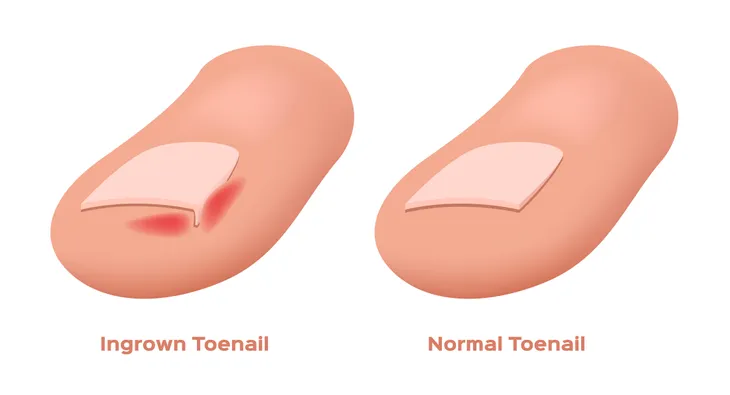Your feet take a beating every day, but we sometimes neglect how much stress we put on them – or wear the proper footwear for the right situation. However, having sore feet can slow you down or worse, make it almost impossible to walk.
There are many foot and lower leg conditions that can be assessed by a podiatrist or a doctor, to help put a spring back in your step. Whether you need orthotic shoes or have another underlying health condition, here are 16 possible reasons your feet are tender…
Metatarsalgia
The Mayo Clinic explains this is a condition that affects the ball of your foot (near the front of your foot before the toes), causing inflammation and pain. “Although generally not serious, metatarsalgia can sideline you,” notes the source.
Those who participate in running and jumping sports are more likely to develop this condition, it adds. There are DIY treatments such as ice and rest, and you should also consider footwear with insoles that better absorb shocks, according to the clinic.
Neuroma
The American Podiatric Medical Association explains this is a painful condition resulting from a non-cancerous growth of nerve tissue between your 3rd and 4th-toes. It can also cause a burning sensation, tingling or numbness, it adds.
The association explains this condition can make walking difficult – literally causing patients to stop in their tracks thinking there is a rock or another object in their shoe. An improper shoe that “causes the toes to be squeezed together” is one possible explanation for the problem, it explains.
Plantar Fasciitis
WebMD calls this the most common reason for heel pain, affecting the plantar fascia, which is the ligament that connects the heel bone to your toes and supports the arch, it explains.
“If you strain your plantar fascia, it gets weak, swollen, and irritated,” says WebMD. This can lead to pain when you’re walking or even standing. While it commonly affects those in middle-age, it can also affect younger people that are on their feet often, it adds. Being overweight is another risk factor.
Athlete’s Foot
As the name suggests, this foot skin condition often affects athletes, but can strike anyone. It’s also called tinea pedis and is a contagious foot fungus that can spread to the toenails and even the hands, according to Healthline. It carries symptoms such as itching, burning, blistering, and even toenails that separate from the nail bed.
Being barefoot in locker rooms or having a minor skin or toenail injury are risk factors, it notes. While the condition isn’t considered too serious on its own, you should consult a medical professional if you have diabetes or a weakened immune system, it adds.
Achilles Tendinitis
The American Academy of Orthopaedic Surgeons says this causes (sometimes severe) pain along the back of the leg, near the heel. The Achilles tendon is actually the largest tendon in the body, and connects the calf muscles and the heel bone, adds the source.
Although the tendon is considered quite resilient, the tendon can be strained from playing running and jumping sports, it adds. There are 2-types of Achilles tendinitis: “noninsertional” means fibers in the middle of the tendon have begun to break down and swell (this commonly affects younger people), and “insertional,” which involves the lower portion of the heel where the tendon attaches to, explains the academy.
Bunions
These are characterized by a “bony bump” at the base of the big toe, explains the Mayo Clinic. “It forms when your big toe pushes against your next toe, forcing the joint of your big toe to get bigger and stick out,” it notes.
Causes for bunion formation are wearing shoes that are too narrow, but can also be the result of “an inherited structural defect” or excess stress on the foot, adds the clinic. The skin over the bunion can become red and sore.
Corns/Calluses
These are hardened layers of skin on the feet that are caused by pressure or friction, explains WebMD. While both can make walking painful, corns generally occur on the top and sides of the toes, while calluses (plantar callus) are generally found on the bottom of the foot, it adds.
Again, improperly fitting footwear is the main culprit of these foot problems – however high heels are a particularly bad offender, according to the source. If you don’t walk a lot or are confused about the root cause, you should have it inspected by a doctor, as it could be a wart or a splinter under the skin, it adds.
Heel Spurs
Yet another source of foot pain is a heel spur which is an abnormal growth on the bottom of the heel. “You can get them from wearing the wrong shoes or from an abnormal walk or posture, or even from activities like running,” writes WebMD. “The spurs may hurt while you’re walking or standing. Lots of people have them, but most don’t have pain.” These spurs are more likely to affect people who have a high arch in their foot or people with flat feet.
To treat a heel spur, WebMD advises wearing a cutout heel pad and using a custom-made insert in your shoe. You should wear shoes that fit properly and those with shock-absorbing soles. To help relieve the pain, you can take over-the-counter pain relievers, rest the foot, and use physical therapy to help get back on your feet. If the pain persists, talk to a doctor about any medical procedures that might be available.
Stone Bruise
WebMD describes a stone bruise as a deep bruise located on the fat pad of the heel or the ball of the foot. “It’s often from an impact injury, but it can also happen after stepping on a hard object,” writes the source. “The pain feels like you’re walking on a pebble.”
Luckily the injury will go away on its own in time. The only form of treatment is to wait it out. Rest the foot, ice the area, and take any over-the-counter pain relievers to alleviate the pain.
Heel Fracture
A heel fracture is exactly what it sounds like, a fracture to the bone in our heel. These often result from a high-impact injury like a fall or car accident. “Your heel bone may not just break, it could also shatter. Heel pain, bruising, swelling, or trouble walking are the main symptoms,” writes WebMD.
Heel fractures must be treated and handled with care. You’ll need to use crutches to avoid putting any weight on the heel and protect it with pads. You should also wear a splint or cast to protect the heel bone, says WebMD. To help alleviate the pain, try using over-the-counter prescription meds or pain relievers. You can also try physical therapy as part of the healing process, but if the pain persists, ask a doctor about surgery.
Hammertoe
Hammertoe sounds like a very strange condition, and it is! Prevention describes it as a foot deformity that causes an abnormal bend in the toe. This bend is a result of an imbalance of muscle in the foot.
The source talked to Jacqueline Sutera, DPM, a podiatric surgeon at City Podiatry in New York City, who says, “You have muscles at the top and bottom of your feet. If one of those muscle groups is stronger than the other, it may result in a hammertoe.
There is a bend in the toe because the muscles in the toe have become weak, “which puts pressure on the tendons and joints in one or more toes,” writes Prevention. “This causes the toe to stick up at the joint.”
People will develop a hammertoe if they wear shoes that don’t fit properly and are subsequently injuring their toe. It is also passed down through family genetics, so family history also plays a role in common causes. Dr. Sutera also warns that people with hammertoe are more likely to develop corns and calluses.
Gout
Gout is a form of arthritis that can result in a great deal of pain in the joints, including those in the feet. “It could be hereditary, or that your kidneys aren’t functioning correctly and you don’t have a certain enzyme to break down the uric acids found in meats, heavy sauces, and seafoods,” says Hillary Brenner, D.P.M., a New York-based podiatric surgeon and spokesperson for the APMA to Women’s Health. “What happens is those urate crystals harden and go to the coldest part of the body — typically the big toe joint.”
This condition will cause the big toe to redden, swell up, feel hot, and be extremely sensitive to touch. Women’s Health notes that these symptoms are also common signs of infection, so anyone who experiences them should go see a doctor. There are some medicines that can help relieve the symptoms of gout, or at least get to the root of the problem.
Fallen Arches or Flat Feet
Fallen arches, also known as flat feet, is actually a common problem. According to the Institute For Preventive Foot Health, roughly 18 million Americans who are 21 and older, suffer from flat feet. This condition is exactly what it sounds like — it is when a person doesn’t have any arches in their feet. They’ve become flattened.
Most people who have this condition are born with it, but it can also develop later in life, “due to direct trauma to the posterior tibial tendon, which is the tendon that attaches your calf muscles to the bones on the inside of your feet.”
Prevention talked to Jacqueline Sutera, DPM, a podiatric surgeon at City Podiatry in New York City, who explains that it can be made worse through high-intensity exercise. “If you do high-intensity sports or exercise, the posterior tibial tendon can be overused and inflamed. You can develop flat feet because of this,” says Dr. Sutera.
Claw Toe
Don’t worry, this doesn’t mean you’ve sprouted a claw! Claw toe is when the toe is bent either up or down and cannot be straightened. According to WebMD, it results from nerve damage in the foot, likely a result of another condition like diabetes or alcoholism. These conditions have the ability to weaken the muscles in the foot. Anyone who experiences claw toe should make sure to wear accommodating footwear. Don’t try to force the foot into a pair of sneakers otherwise it’ll just be made worse and could cause either irritation or calluses.
To treat this condition, WebMD suggests wearing better fitting footwear and avoiding both high heels and tight shoes. Do stretches to try and straighten and strengthen the toe and toe joints. Try using shoe inserts and ask your doctor about surgery.
Rheumatoid Arthritis
Arthritis is known for causing pain and inflammation in the joints. Rheumatoid arthritis (RA) is no different. It is a chronic inflammatory disorder that affects all of the joints, right down to the feet. “A side effect of rheumatoid arthritis is that your bones start to deviate, so they’re not sitting straight, they’re starting to angulate,” says Hillary Brenner, D.P.M., a New York-based podiatric surgeon and spokesperson for the APMA to Women’s Health.
Rheumatoid arthritis will also cause the joints in the toe to become swollen and stiff with actual rheumatoid nodules “which are growths that occur on the joint, like a ball coming out of the joint, and are very painful,” says Brenner to the source. If you’re experiencing foot pain and the symptoms sound like those of rheumatoid arthritis (particularly if you have a family history of RA), go see a rheumatologist.
Ingrown Toenail
Ouch! Most of us have heard of an ingrown nail or maybe even experienced one! If this happens, it can be quite painful. It results when the skin grows over one or both sides of a toenail which is not only painful, but can also lead to an infection.
To treat this, WebMD recommends soaking the foot in warm water about four times a day. You should then wedge a piece of gauze between the nail and the wet skin. If this doesn’t work, go see a doctor.
